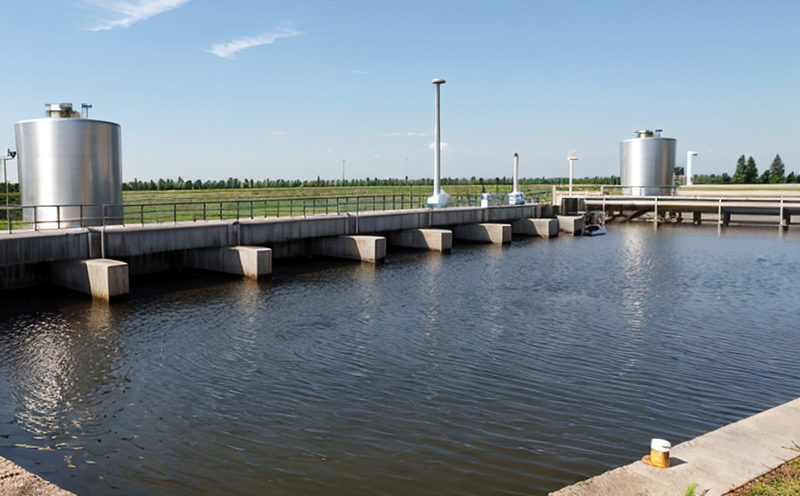ASTM E2562 Rapid Microbial Testing in Wastewater Samples
The ASTM E2562 standard specifies a rapid microbiological method for detecting and quantifying coliform bacteria in wastewater samples. This service is crucial for ensuring the safety of water treatment processes, compliance with environmental regulations, and safeguarding public health.
Coliform bacteria are used as indicators of fecal contamination in water supplies. The presence of these bacteria suggests that pathogens may also be present, which could lead to serious health issues if not addressed promptly. This rapid testing method is particularly valuable for facilities like municipal wastewater treatment plants, industrial water systems, and private drinking water providers.
The ASTM E2562 protocol involves several key steps: sample collection, transport, preparation, inoculation into selective media, incubation, and enumeration of colonies. The use of selective media allows for the differentiation between coliforms and other bacteria, ensuring accurate identification. This method provides results in as little as 18 hours, significantly faster than traditional membrane filtration methods which can take up to 72 hours.
For quality assurance, laboratories must follow strict protocols outlined by ASTM E2562. These include maintaining a controlled environment for the incubation process, using calibrated equipment, and adhering to aseptic techniques during sample preparation. The precision of this method is enhanced by regular calibration checks and proficiency testing.
The rapid nature of ASTM E2562 makes it an ideal choice for facilities that need timely data to make informed decisions about water treatment processes. Early detection of coliform contamination allows for quick corrective actions, reducing the risk of pathogen transmission and ensuring compliance with regulatory standards such as EPA (U.S.) and WHO (World Health Organization).
In addition to its speed advantages, ASTM E2562 also offers cost efficiency by minimizing downtime in water treatment facilities. By identifying issues early, these facilities can avoid more extensive and expensive remediation efforts later on.
Quality and Reliability Assurance
- Calibration Checks: Regular calibration of all instruments used in the testing process to ensure accurate results.
- Aseptic Techniques: Adherence to strict aseptic procedures during sample preparation to prevent contamination.
- Incubation Environment: Maintaining optimal temperature and humidity levels for consistent microbial growth.
- Selective Media: Using high-quality, calibrated selective media that differentiates coliforms from other bacteria.
The reliability of the ASTM E2562 method is further enhanced by proficiency testing programs. Participation in these programs ensures that laboratories are meeting industry standards and can demonstrate their capability to produce accurate results. Regular participation in such programs helps maintain consistent quality across all samples tested.
International Acceptance and Recognition
The ASTM E2562 standard has gained widespread acceptance globally, with many countries adopting it as a reference for water quality monitoring. Its recognition by international bodies like the World Health Organization (WHO) and the U.S. Environmental Protection Agency (EPA) underscores its importance in global water safety initiatives.
Many nations have integrated ASTM E2562 into their national standards, ensuring harmonization of practices across borders. This standard is particularly valued in regions where rapid response to waterborne pathogens is critical for public health protection.
The acceptance and implementation of ASTM E2562 reflect a commitment to modernizing wastewater management strategies, emphasizing efficiency and accuracy in microbiological testing. By adhering to this protocol, laboratories contribute to the global effort towards safer and cleaner water supplies.
Use Cases and Application Examples
| Use Case | Description |
|---|---|
| Municipal Wastewater Treatment Plants | Detecting early signs of coliform contamination to prevent potential public health risks. |
| Industrial Water Systems | Ensuring compliance with discharge regulations and preventing waterborne pathogens from entering the environment. |
| Private Drinking Water Providers | Providing rapid feedback on water quality to customers, enhancing trust in service offerings. |
| Research Institutions | Supporting scientific research by providing accurate and timely data for microbiological studies. |
The ASTM E2562 method is particularly beneficial for facilities that need to monitor water quality frequently. Its rapid turnaround time allows these organizations to take proactive measures, thereby improving operational efficiency and public health outcomes.





